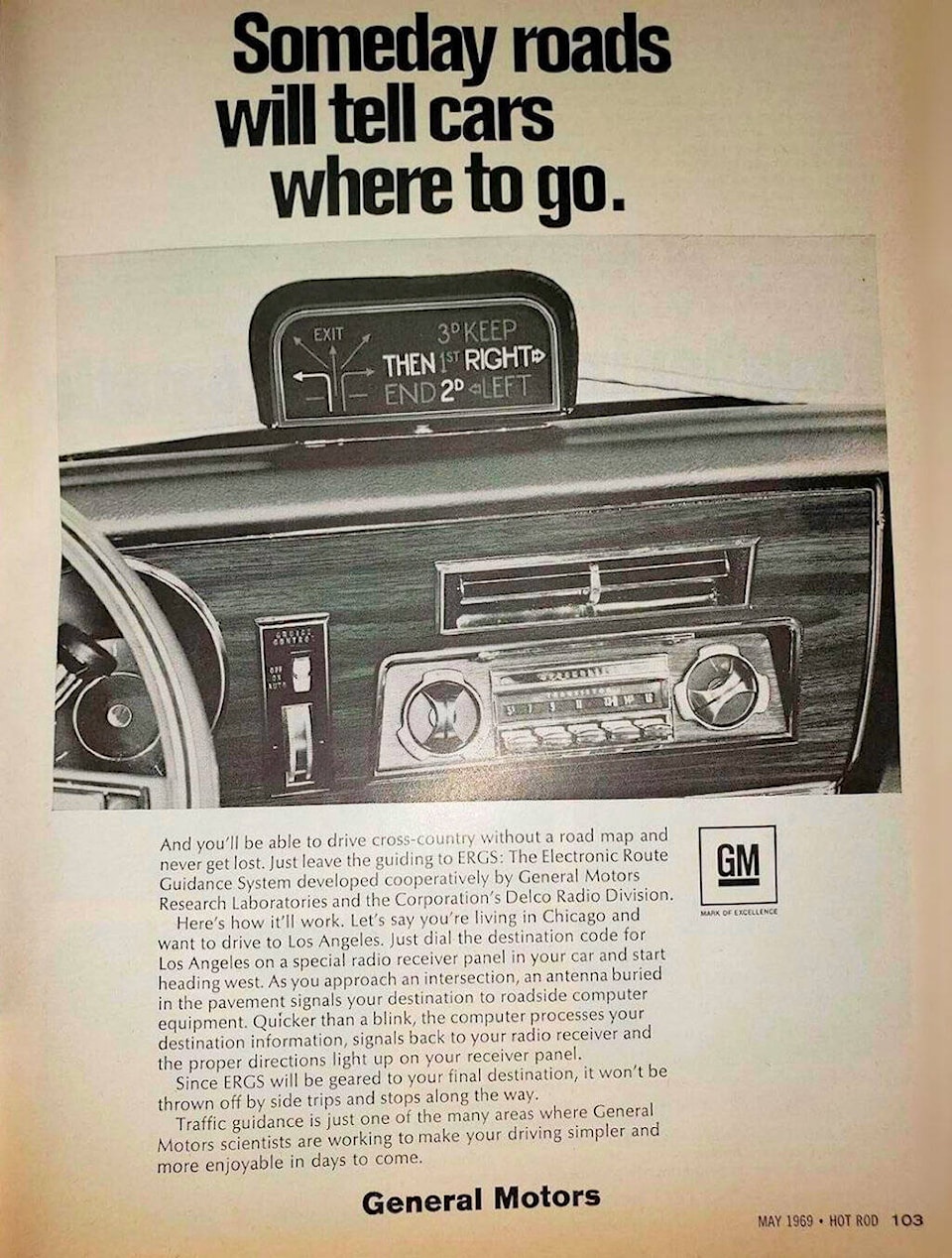A General Motors ad from more than half a century ago sent me on an obsessive fact-checking journey.
The advertisement, which ran in May 1969, stated, “In the future, roads will tell cars where to go.” It was for the Electronic Route Guidance System, a vehicle navigation system under development at that time. I saw an image of this ad on my social media feed a few days ago.
This system involved antennas buried in the pavement, relaying information to a special radio in the car. The result seems similar to global positioning system navigation on smartphones and in some vehicles, even though the technology is different.
Because the ad was so close to describing our existing navigation systems, I wondered if it was genuine or a well-crafted spoof. It wouldn’t have been the first time a fake ad had shown up.
READ ALSO:
READ ALSO:
The simplest fact-checking method would have been to page through the issue of the automotive magazine to see the ad for me. But I don’t have a copy of that magazine issue and it is not available at libraries near me.
There are online repositories with digitized versions of old magazines, but this particular magazine issue was not included. However, I was able to find other publications where the ad had appeared, as well as studies on advertising history where the slogan and a copy of the ad itself could be found.
This navigation concept showed remarkable foresight and innovation. It’s not the first time automotive technology has been ahead of its time. Electric cars first appeared more than a century ago. Aerodynamic designs for wind resistance date to at least 1934. Car phone service was introduced in 1946. With these and other early innovations, the navigation concept described in 1969 should have come as no surprise.
Why did I care whether the ad was genuine? An item from more than half a century ago does not affect my quality of life today.
The reason I wanted to verify this item is that there are many pranks, spoofs and outright lies circulating online. Not everything I see can be trusted.
While some spoofs are designed as jokes and intended to get a chuckle or two, there are also some malicious deceptions.
Each year, scammers from around the world defraud people by using cleverly crafted but completely dishonest schemes.
And some information of dubious accuracy is created in order to garner a strong emotional reaction from those who see it. These include badly dated statistics used to advocate for gun control, rumours and innuendos about present or past elected officials and quotes wrongly attributed to historical figures.
Every time I catch an inaccurate or deceitful statement, I become a little more jaded and a little less trusting. If someone I know posted fake or misleading content, even if unintentionally, will I be able to trust that person in the future?
Sites such as and other verification services provide an important service. I use them often. But I’d rather live in a world where I don’t have to doubt the accuracy of statements I encounter from people I know.
Is such a world possible?
Oh well. At least I learned a few things about the history of automobile navigation systems. Where will my combination of skepticism and research take me next?
John Arendt is the editor of the Summerland Review.
To report a typo, email:
news@summerlandreview.com.
news@summerlandreview.com
Like us on and follow us on .



